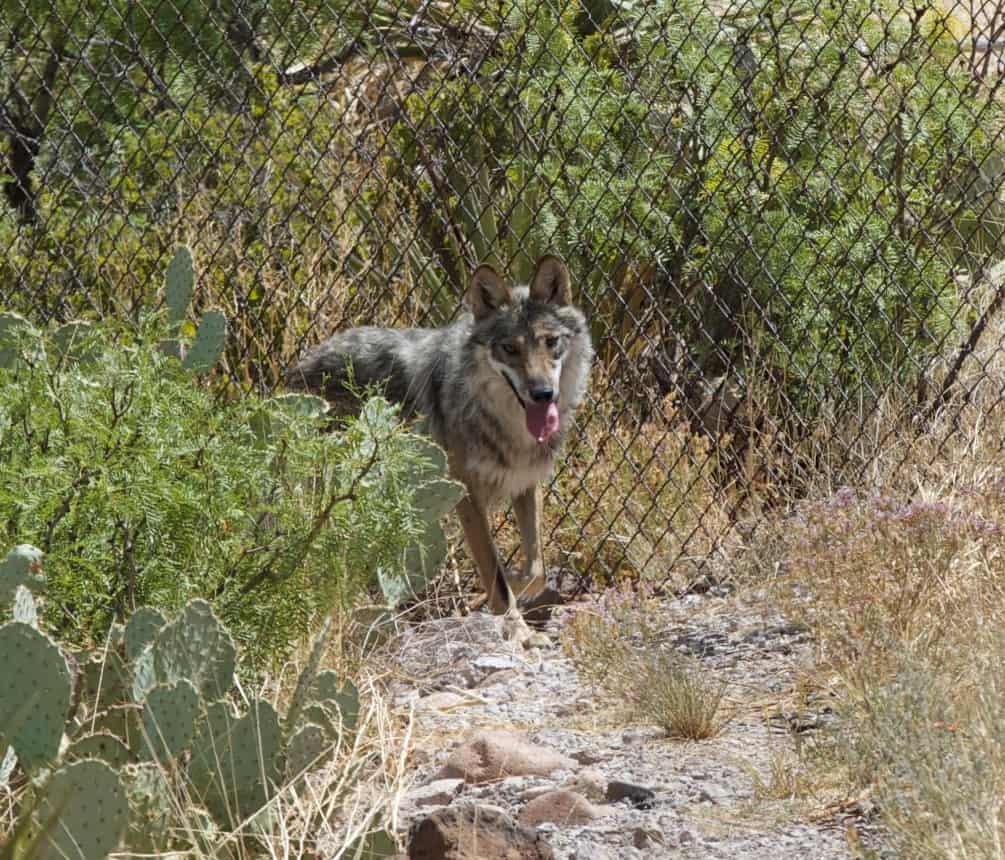
Species
Mexican wolf (Canis lupus baileyi)
Principal Biologist(s)
Chris Wiese, Mike Phillips
Project Location
Ladder Ranch, NM
Conservation Problem
Once common throughout portions of Arizona, New Mexico, Texas, and Mexico, human persecution resulted in the extirpation of Mexican wolves in the wild. Current challenges include political pressures against wolf releases, illegal shootings, and lack of space for population expansion. Additionally, due to the small founder population, diminished genetic diversity appears to be affecting the fecundity and survival of wolves in the wild. Limited pen space in the captive breeding program restricts the size and reproductive output of the captive population.
Conservation Status
Listed as endangered under the Endangered Species Act
Project Goals & Objectives
The overarching goal of the Mexican Wolf Recovery Program is to rebuild healthy ecosystems by recovering top predators like the Mexican gray wolf in the wild. Turner Endangered Species Fund’s (TESF) aim is to provide support to the U.S. Fish and Wildlife Service’s (USFWS) recovery efforts by operating a pre-release facility for Mexican gray wolves. In this capacity, we breed wolves in captivity and provide transitional housing and acclimation care for captive wolves that are chosen for release to the wild as well as for wild wolves that have to be (temporarily or permanently) removed from the wild.
Project Background
The Ladder Ranch has been involved in Mexican Gray Wolf recovery since 1997, with construction of the Ladder Ranch Wolf Management Facility (LRWMF). This pre-release facility is managed by TESF and the USFWS. TESF is the only private group ever permitted to assist with fieldwork in captivity and the wild to advance wolf recovery. Since this facility began operation in 1998, it has held over 100 wolves.
As a member of the Mexican Wolf Species Survival Plan (SSP), we follow approved management guidelines that are administered in both the U.S. and Mexico. The mission of the SSP is to reestablish the Mexican wolf in the wild through captive breeding, public education, and research.
Currently, approximately 80 Mexican wolves live in the wild in New Mexico and Arizona, while nearly 300 animals comprise the captive population. Given the rarity of free-ranging Mexican wolves, for the foreseeable future the captive population will provide much needed security to the recovery effort. As a pre-release facility, the LRWMF promotes wolf recovery by providing pre-release care and acclimatization of animals eligible for release to the wild.
The SSP uses several criteria to determine the eligibility of a wolf for release. These include: genetic makeup in relation to both captive and wild populations (i.e., “surplus” to the captive community and underrepresented in the wild), reproductive performance, behavior, and physical suitability.
The LRWMF also plays a support role in the USFWS’s implementation of wolf reintroductions to the wild. For example, LRWMF assists with specific management needs associated with the Mexican Wolf Blue Range Reintroduction Project, such as providing pen space for wolves that require temporary or permanent removal from the wild.
The success of the Mexican Gray Wolf Recovery Program depends on the captive propagation of wolves that are genetically and physically suitable for release in the wild. However, it is also critically important that release candidates exhibit natural behaviors, including avoidance and fear of humans. We therefore take steps to avoid socializing or habituating the wolves housed at the LRWMF so they will not be attracted to human activity once released into the wild. This includes keeping the period of captivity as brief as possible, and minimizing contact with humans or human activities (i.e., we feed only once or twice a week, and we spend as little time as possible in the wolf pens). We also reinforce the wolves’ natural avoidance behavior to humans by providing as much privacy and as little disturbance as possible.
